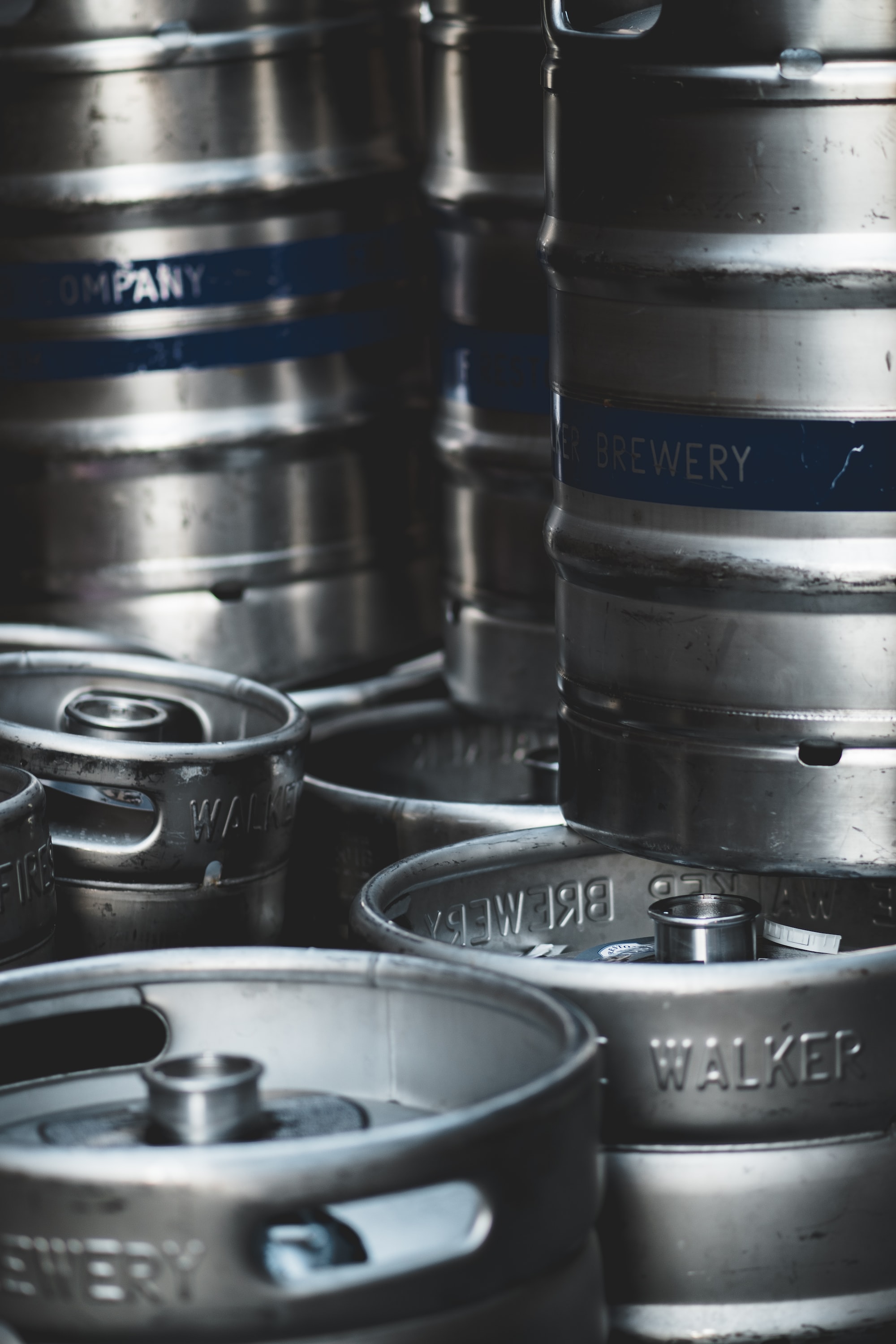
How Many Kegs Does a Craft Brewery Need?
It's no secret that the craft brewing industry is booming.
According to the Brewers Association, craft beer production volumes now represents 13.1% of the total beer market – and that's just in America.
As the industry segment continues its growth, brewers are increasingly looking for ways to streamline their operations and increase efficiency. One question that often comes up is how many kegs a brewery really needs.
This blog post will explore that question in detail, offering insights into how many kegs you need and how you can ensure proper utilization over time.
Craft Brewery Keg Requirements: First Principles
When it comes to beer storage – and the keg quantities required to ensure successful distribution – there are a few key questions craft brewers should be asking.
First, how quickly do you expect your kegs to come back? This will vary from brewery to brewery, and will depend largely on the distribution style you choose, as well as whether or not you're selling kegged-product in-house.
A brewery that manages their own distribution will likely see faster keg cycling than one that works with third-party logistic or distribution partners. For kegs moving out-of-house, you should lean on the industry average turn-time of 7-weeks. For kegs that are being sold in-house (via your taproom), you can anticipate a full keg cycle to take 3-4 weeks.
Second, what volumes are you expecting to brew (and in what styles)? Volumes are an easy way of estimating keg requirements, but if you're planning to produce several varieties of beer, each of those varieties may have different distribution requirements. That means you may need more kegs on hand than if you were only producing one type of beer. For specialty or vintage beers, you should expect the cycle times to be much longer than that of a traditional brew.
With those two key ideas in mind, we can now turn our attention to the actual keg count calculation.
How Many Kegs Does A Craft Brewery Need?
The short answer is, it depends. Thankfully, there are sales-based best-practices for helping you come up with a rough number to guide decision-making.
Sales Based Keg Estimates
For craft brewers that want to estimate keg fleet requirements based on sales, industry best-practice is to have anywhere from four to five kegs for every one tap/account.
The tap approach works incredibly well if you have a set number of permanent taps that you're funnelling beer through, but can get challenging if most of your product moves through rotating or seasonal taps. Because of that, it can be good to simply consider the number of accounts that you'll need to get product into, and from there calculate the number of kegs you need.
The four-to-five kegs per account assumes that one keg will always be on tap, one set aside for par, one in transit (needing pickup, at a warehouse, etc), one ready for filling at the brewery, and one spare. The reality is that this is a rather relaxed approach to fleet optimization, and that similar production volume can be moved successfully with less kegs. More on that next.
How Can I Determine Keg Fleet Efficiency?
We want to emphasize that the keg number calculated is an estimate – and should treated as such. To ensure efficient distribution efforts, you'll likely need to adjust the number of kegs over time.
The easiest way to do this will be by utilizing a keg tracking software that tracks locations and movement, offering you insights into the distribution of your fleet over time. This will allow you to assess the number of kegs you have at each stage of the distribution funnel and revise the count up or down depending on usage.
If you find that 20-30% of your fleet if sitting clean and unused at any given time, it's likely that you own too many kegs (and can liquidate them for cash). If the opposite is true – meaning you constantly have no clean kegs available – it's likely that you'll want to purchase some to ensure that you aren't missing out on additional revenue potential.
Kegshoe Keg Tracking has an Inventory Distribution Report that does just that, showcasing your fleet as it evolves over time across various states – including Clean, Dirty, On Hand (Filled & Stored), and Delivered. This visualization of your keg fleets health with assist in validating the number of kegs you actually need, highlighting areas where bloat may exist in your network.
Final Considerations For Keg Fleet Sizing
As a final note on keg fleet sizing, it’s important to consider seasonal (and cyclical) trends when determining your needs. Many brewers see a sharp uptick in demand during summer months or at festivals, with sharp drop-offs in winter months. There is a conversation to be had for renting versus buying in these instances, as it's important to ensure that you’re not stuck with too many kegs when demand flattens out.
Additionally, while out-of-house distribution is an integral part of craft beer success, it's important to remember the importance of on-site sales as well – whether through taproom pours or growler fills. Keeping in mind the distribution needs of these outlets will be critical to ensuring that you have a cadence and distribution system in place to support the on-site demand.
To summarize, it's important for craft brewers to understand how distribution works and the best practices for keg fleet sizing and distribution. Industry guidelines suggest three kegs per account should be enough, but this number may need to be adjusted depending on distribution setup, industry trends, and sales/product expectations.
With this information on hand – and the support of an industry-leading keg tracking software – craft brewers can create a distribution system that is efficient and cost-effective while still meeting customer demands.
To learn more about how Kegshoe can help you optimize your keg fleet moving forward, contact our team today.